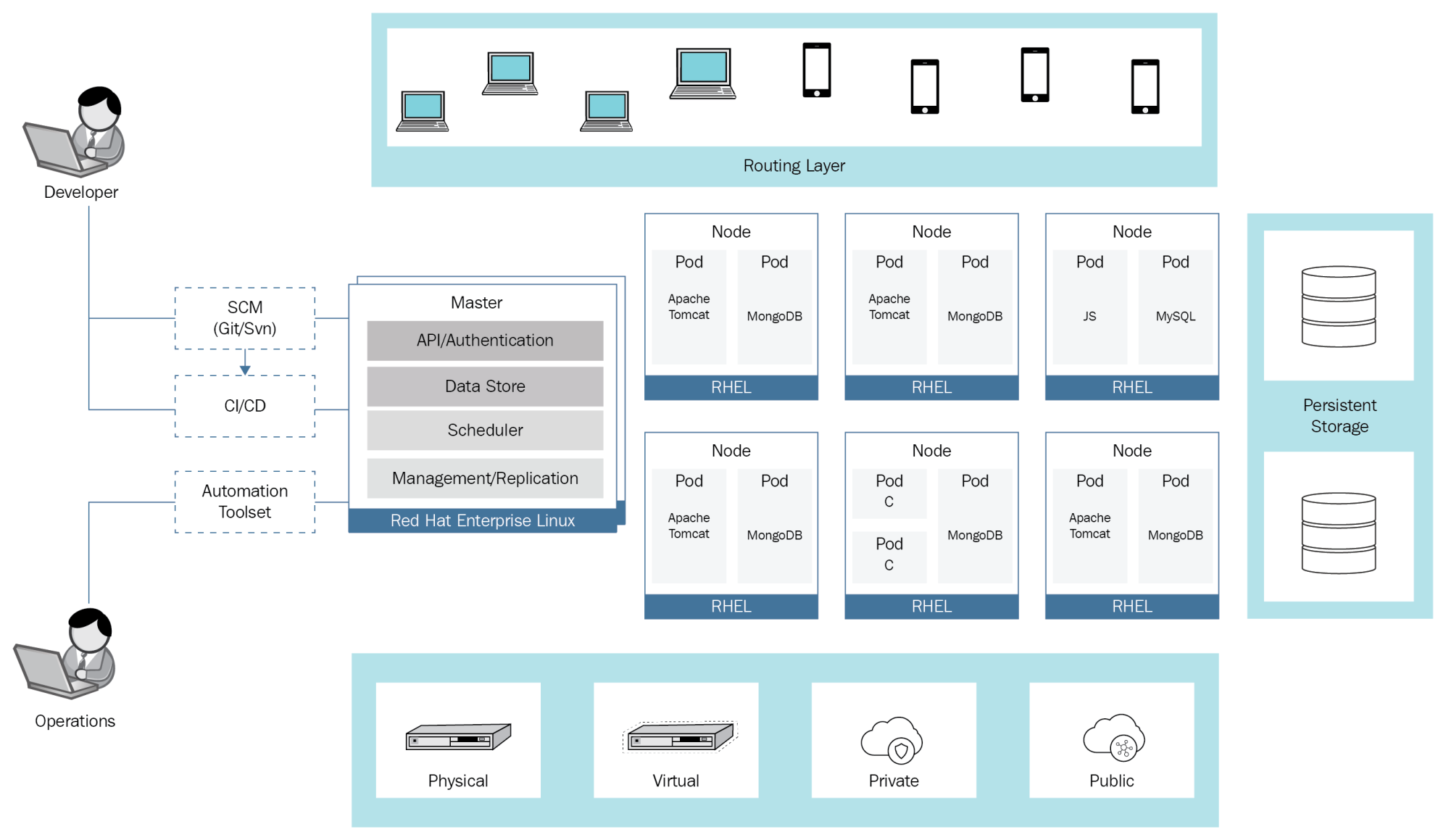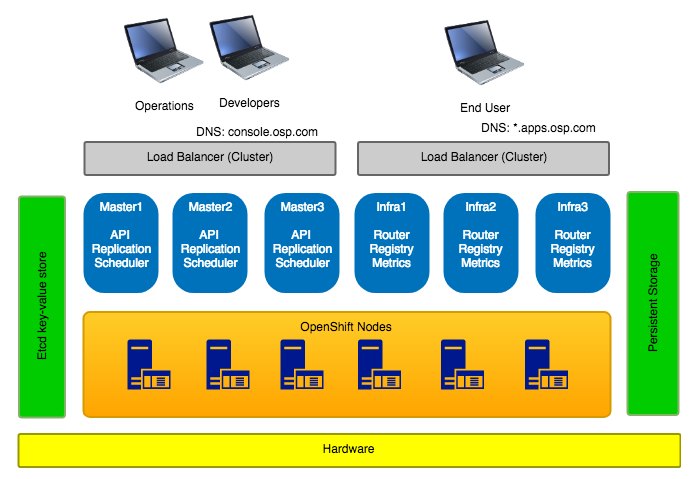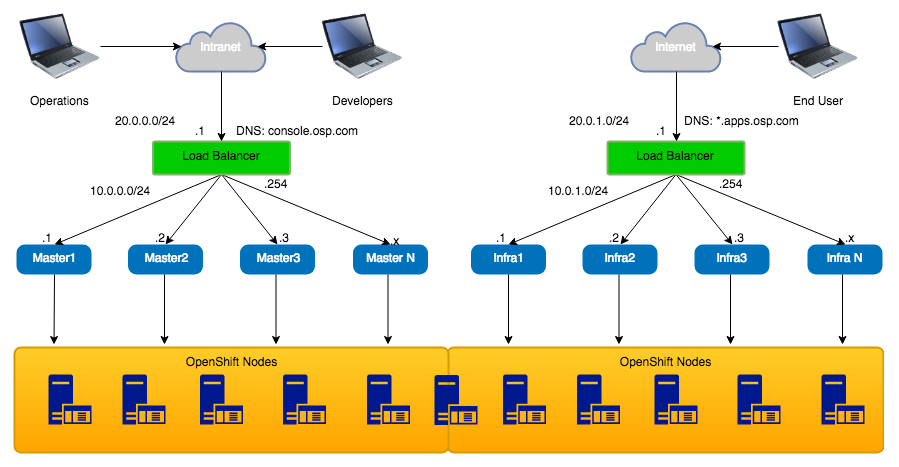HA in OpenShift
In the previous chapters, we ran our applications on a single node, or sometimes, two nodes. Some might say that if there is more than one OpenShift node in the cluster, it is considered a redundant configuration, but that is far from true.
If we compare standard OpenShift architecture and OpenShift HA, you will see some differences between them:

OpenShift classic architecture
Here we have nodes, masters, storage, and a routing layer consisting of infra nodes. OpenShift HA architecture is quite similar but has one distinct difference—in the routing layer we have load balances that make the overall solution always accessible. All other components are redundant by nature:

OpenShift HA architecture
Virtual IPs
We can see that in OpenShift HA, we have what's called an enterprise load balancer, with two Virtual IPs (VIPs). We need one VIP for traffic to master nodes, and another VIP for traffic to actual OpenShift applications, running on OpenShift nodes within pods:

OpenShift with...




































































